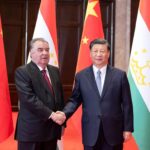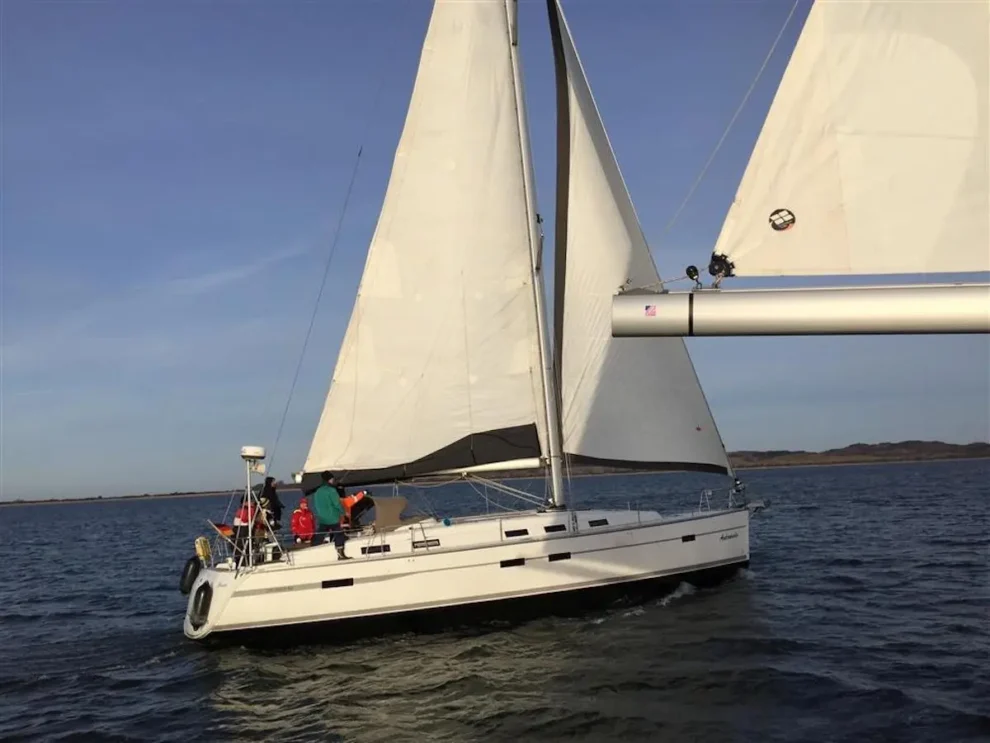Reports that nongovernmental pro-Ukrainians were behind the Nordstream gas pipeline explosions last year appear to be losing traction, as illustrated by a new Reuters report quoting skeptical remarks by a Swedish official.
As originally put forth on March 7 by the New York Times (quoting unnamed US officials with access to intelligence) and by a consortium of German media (quoting unnamed police sources), the theory held that the otherwise unidentified culprits had carried out the Baltic Sea operation from a rented 50-foot charter sailing yacht named Andromeda.
Some analysts (including me) found the tale highly improbable from the start and suggested – or, in the case of investigative reporter Seymour Hersh, flat-out asserted – that it was a cover story concocted by spooks to counter Hersh’s February 8 report, based on the Pulitzer Prize winner’s own anonymous sourcing, that US divers working for the CIA did the deed.
This week, Washington Post reporters revisited the yacht tale, apparently trying to keep it afloat even as they acknowledged the story’s holes. One big hole: The reporters learned that the perps would have needed more of a base than a single sailing yacht for their operations at sea:
US and European officials said they still don’t know for sure who is behind the underwater attack. But several said they shared German skepticism that a crew of six people on one sailboat laid the hundreds of pounds of explosives that disabled Nord Stream 1 and part of Nord Stream 2, a newer set of pipelines that wasn’t yet delivering gas to customers.
Experts noted that while it was theoretically possible to place the explosives on the pipeline by hand, even skilled divers would be challenged submerging more than 200 feet to the seabed and slowly rising to the surface to allow time for their bodies to decompress.
Such an operation would have taken multiple dives, exposing the Andromeda to detection from nearby ships. The mission would have been easier to hide and pull off using remotely piloted underwater vehicles or small submarines, said diving and salvage experts who have worked in the area of the explosion, which features rough seas and heavy shipping traffic.
But in the course of their article, the Post reporters, at least to this reader’s eye, reinforced doubts about the veracity of the yacht yarn to a far greater extent than they straightened it out into a believable report. Take these details that the article offers relating to the yacht:
The German investigation has determined that traces of “military-grade” explosives found on a table inside the boat’s cabin match the batch of explosives used on the pipeline. Several officials doubted that skilled saboteurs would leave such glaring evidence of their guilt behind. They wonder if the explosive traces — collected months after the rented boat was returned to its owners — were meant to falsely lead investigators to the Andromeda as the vessel used in the attack.
“The question is whether the story with the sailboat is something to distract or only part of the picture,” said one person with knowledge of the investigation.
Still others allow that the bombers may simply have been sloppy. “It doesn’t all fit,” a senior European security official said of the fragments of evidence. “But people can make mistakes.”
‘International game of Clue’
But the most puzzling part of the Post story – and clearly the reporters themselves found this truly odd – is that, as the writers put it, “the Nord Stream mystery has turned into an international game of Clue,” but with reluctant players. The Post report goes on:
For all the intrigue around who bombed the pipeline, some Western officials are not so eager to find out.
At gatherings of European and NATO policymakers, officials have settled into a rhythm, said one senior European diplomat: “Don’t talk about Nord Stream.” Leaders see little benefit from digging too deeply and finding an uncomfortable answer, the diplomat said, echoing sentiments of several peers in other countries who said they would rather not have to deal with the possibility that Ukraine or allies were involved.
Even if there were a clear culprit, it would not likely stop the provision of arms to Ukraine, diminish the level of anger with Russia or alter the strategy of the war, these officials argued. The attack happened months ago and allies have continued to commit more and heavier weapons to the fight, which faces a pivotal period in the next few months.
Since no country is yet ruled out from having carried out the attack, officials said they were loath to share suspicions that could accidentally anger a friendly government that might have had a hand in bombing Nord Stream.
What’s oddest of all about the piece, though, is that at no point does it single out one particular “friendly government” that has been publicly accused in Seymour Hersh’s report of bombing Nord Stream: the United States. Without pointing explicitly to that subtext, the writers say:
In the absence of concrete clues, an awkward silence has prevailed.
“It’s like a corpse at a family gathering,” the European diplomat said, reaching for a grim analogy. Everyone can see there’s a body lying there, but pretends things are normal. “It’s better not to know.”
Hersh chimes in again
Hersh would add that this “better not to know” mindset affects quite a few Western news media organizations, including the Post. “No American officials were quoted, even anonymously, by the Post,” he notes in a new April 5 article of his own.
“The Biden administration has become a Nord Stream-free reporting zone,” he writes. “Chalk one up for the various CIA officials who have been supplying phony stories to the media here and abroad in what has been a successful effort to keep the world focused on any possible suspects outside of what has emerged as the most logical one – the president of the United States.”
Hersh writes that the author of one of the German reports that were published the same day as the New York Times report is Holger Stark of Die Zeit, “an experienced journalist whom I have known since he worked in Washington a decade or so ago.”
Stark, Hersh says, “told me he had excellent sources in the German federal police and learned what he did from those links, and not from any intelligence agency, German or American. I believed him.” But Hersh had trouble with the story those sources told to Stark.
Stark told him that officials in Germany, Sweden and Denmark had decided shortly after the September 26, 2o22, pipeline bombings “to send teams to the site to recover the one mine that has not gone off. He said they were too late; an American ship had sped to the site within a day or two and recovered the mine and other materials. I asked him why he thought the Americans had been so quick to get to the site and he answered, with a wave of his hand, ‘You know what Americans are like. Always wanting to be first.’”
Says Hersh:
There was another very obvious explanation.
The trick of a good propaganda operation is to provide the targets – in this case the Western media – with what they want to hear. One intelligence expert put it to me more succinctly: “When you do an operation like the pipelines, you need to plan a counter-op – a red herring that has a whiff of reality. And it must be as detailed as possible to be believed.”
“People today have forgotten that there is such a thing as a parody,” the expert said…. “The CIA’s goal in the pipeline case was to produce a parody that was so good that the press would believe it. But where to start? Cannot have the pipelines destroyed by a bomb from an airplane or sailors on a rubber boat.
“But why not a sailboat? Any serious student of the event would know that you cannot anchor a sailboat in waters that are 260 feet deep” – the depth at which the four pipelines were destroyed – “but the story was not aimed at him but at the press who would not know a parody when presented with one.”
The journalist’s job
Hersh in his original exposé made clear that what he thought Biden had been up to was to deprive Vladimir Putin of the power, through the Russian gas supply to Germany via Nord Stream, to pressure Berlin into abandoning Ukraine in the war that had begun there. Hersh has acknowledged he opposed NATO expansion into the former Soviet Union and he is not known to be a fan of allied efforts to help Ukraine fight the war.
Unlike Hersh but like many journalists working for Western media, I personally favor US and allied support for Ukraine. That personal support extends to covert operations. If Biden did what Hersh says the president did, I personally would hope he gets away with it. I’d hate to see the always anti-Biden and increasingly anti-Ukraine Republicans in the US House of Representatives schedule a hearing in hopes it would affect the 2024 election.
But, as a journalist, I don’t go along with helping the Biden administration by pretending not to see what is obvious. The duty to hold the words and deeds of government to tight scrutiny takes priority over my personal preferences.
As a friend of mine who is one of Hersh’s fellow Pulitzer laureates reminded me today in an email, none of us should want to risk “following in the grand tradition of Judith Miller.”
Miller, in case you’re too young to recall, was a New York Times reporter who loved the crazy stories that the George W Bush administration put out about Saddam Hussein’s supposed weapons of mass destruction and fed them to her readers until it was too late and the disastrous Iraq War that the neocons had sought was well underway.
Hersh quotes his expert’s view that “parody” is just the thing to fool the press. To me, however, cockamamie stories like the one involving the yacht suggest not nefarious cunning but simple incompetence. Get your act together, I’d advise the Biden people.
Source : Asia Times







































